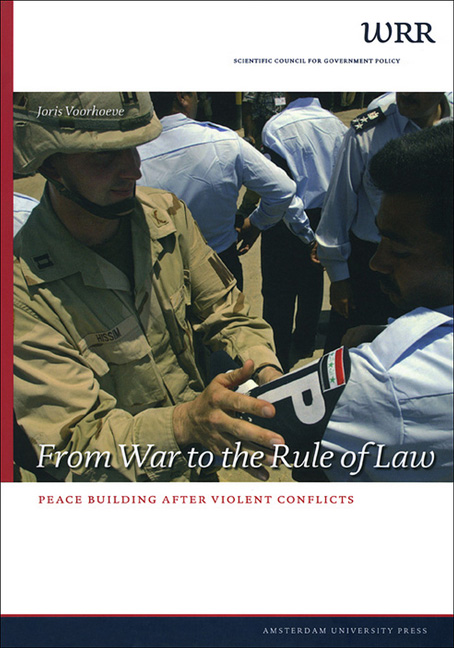Book contents
- Frontmatter
- Dedication
- Contents
- Preface
- 1 Why this Study?
- 2 An Overview of Peacebuilding
- 3 Towards Typology and Theory
- 4 (Re) Establishing Order
- 5 (Re) Building the Rule of Law
- 6 Resources and Costs
- 7 The European Union and Post-Conflict Peacebuilding
- 8 Conclusions and Recommendations
- List of Country Illustrations, Tables, Text Boxes and Maps
- Acknowledgments
- Further Reading
- Some Relevant Websites
2 - An Overview of Peacebuilding
Published online by Cambridge University Press: 14 January 2021
- Frontmatter
- Dedication
- Contents
- Preface
- 1 Why this Study?
- 2 An Overview of Peacebuilding
- 3 Towards Typology and Theory
- 4 (Re) Establishing Order
- 5 (Re) Building the Rule of Law
- 6 Resources and Costs
- 7 The European Union and Post-Conflict Peacebuilding
- 8 Conclusions and Recommendations
- List of Country Illustrations, Tables, Text Boxes and Maps
- Acknowledgments
- Further Reading
- Some Relevant Websites
Summary
WHAT IS PEACEBUILDING?
Everything necessary for normal human life starts with the absence of violence. The core tasks of any government are to provide physical peace, public security and basic freedoms to its citizens. The common purpose of various forms of democratic government is to create conditions which enable its population to satisfy their needs and desires and enjoy human rights, to the extent that this does not harm others.
Of course, no country is Utopia. Thomas More's Utopia was a fantasy island without international relations. There were no external security concerns. In the real world, the core tasks of maintaining peace, security and freedom require international action. In the intertwined world of the 21st century, it is in the national interest of democratic states to help end war, civil war, terrorism and gross and persistent human rights violations outside their own states, to the extent possible. (The degree to which this is feasible is discussed in the following chapters.) Rapid global communications quickly spread unrest beyond state borders. Territories which are plagued by political violence, large scale crime, pandemic diseases and absolute poverty upset and ‘infect’ distant nations.
In this study, post-conflict peacebuilding means building or reconstructing a country after its government, institutions, population and economy have been ravaged by large-scale armed conflict. Experience shows that after an internal or international war, and after a successful foreign military intervention, a peace enforcement action or peacekeeping operation, there are serious reconstruction problems which take a long time to resolve. Military intervention is usually difficult and controversial in itself, but it is also the beginning of new, tough challenges. At the end of a conflict there is often no consolidated central power, no functioning legal order, no good governance, no democracy, and no protection of human rights. In many cases most of the population lives in poverty – already endemic or worsened by the war. Hatred between groups exacerbated by wartime violence and abuses often increases the risk of a return to war. Most wars sow the seeds of new violence.
Post-conflict reconstruction faces the same challenges and requires the same efforts as state-building in places where the state collapsed for reasons other than war.
- Type
- Chapter
- Information
- From War to the Rule of LawPeace Building after Violent Conflicts, pp. 19 - 28Publisher: Amsterdam University PressPrint publication year: 2007



